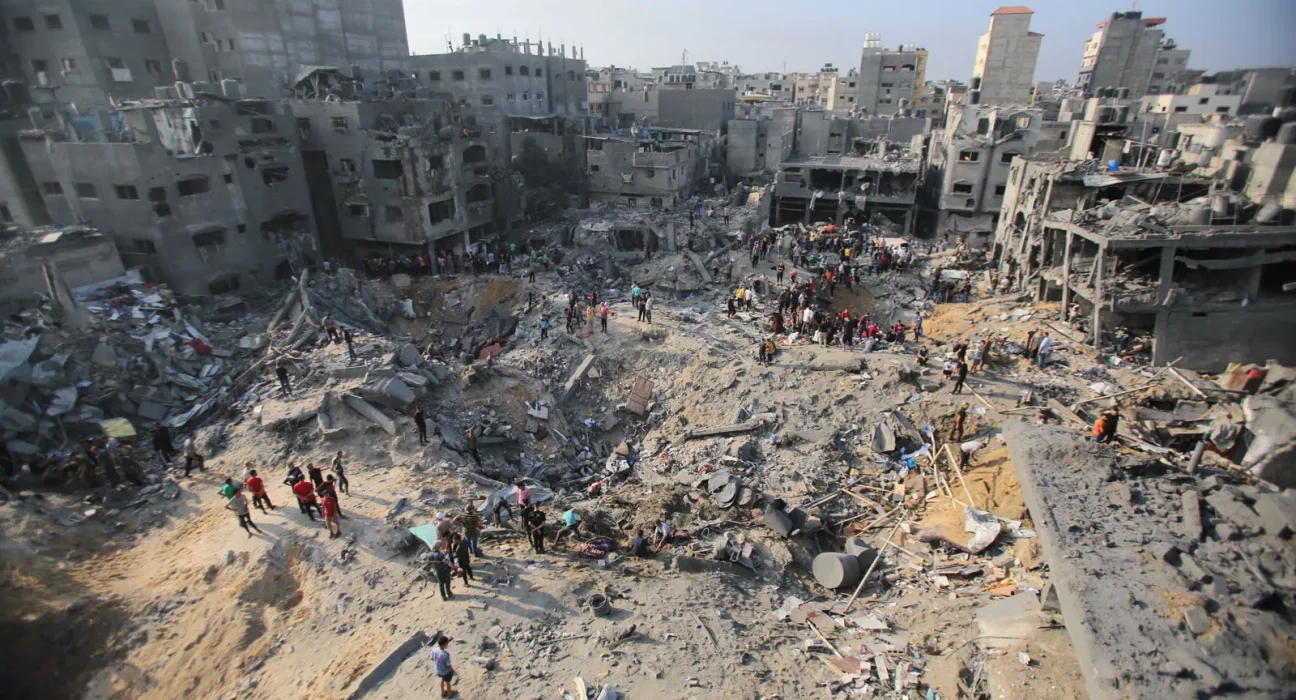Israel and Hamas have reached a landmark agreement marking the first phase of a U.S.-brokered ceasefire plan aimed at ending the devastating two-year conflict in Gaza. The deal, announced by U.S. President Donald Trump, outlines a temporary halt in hostilities, the release of all hostages, and a partial withdrawal of Israeli troops from the enclave.
According to details confirmed by the White House and Israeli officials, the ceasefire is part of a broader 20-point peace roadmap introduced by Trump’s administration last week. The plan calls for an immediate cessation of military operations, the release of hostages within 72 hours, and the creation of a “Board of Peace”, an international coalition tasked with monitoring the truce and overseeing Gaza’s transition.
In a post on his Truth Social platform, Trump wrote:
“I am very proud to announce that Israel and Hamas have both signed off on the first phase of our Peace Plan. All parties will be treated fairly as we move toward lasting peace.”
Under the agreement, Hamas is expected to begin releasing hostages, both those alive and the remains of those killed during captivity, as early as Monday. In return, Israel will begin pulling back its forces to a pre-agreed line inside Gaza, effectively ending most ground operations.
The peace roadmap also proposes that Gaza be governed by a “technocratic and apolitical Palestinian committee” under international supervision, effectively sidelining Hamas from formal authority. However, Trump made no mention of future governance arrangements in his Wednesday announcement, leaving the issue open to further negotiation.
Reactions to the deal have been mixed. Israeli Prime Minister Benjamin Netanyahu welcomed the development as a “moral and national milestone,” describing it as a critical step toward regional stability.
Hamas, in its own statement, confirmed that it had submitted a list of Palestinian prisoners to be freed as part of the deal, while insisting that any long-term truce must include a full Israeli withdrawal and guarantees against future incursions.
Despite the breakthrough, both sides remain divided on key issues. Israel continues to demand that Hamas lay down its weapons, a condition the group has thus far refused. Meanwhile, Hamas is pushing for international assurances to prevent Israel from resuming operations after the first phase concludes.
Global leaders have largely welcomed the announcement, though many have urged caution. British Prime Minister Keir Starmer, Canada’s Prime Minister Mark Carney, Australian Prime Minister Anthony Albanese, and New Zealand’s Foreign Minister Winston Peters all issued statements of support, calling the agreement a “positive first step” toward ending the war.
U.N. Secretary-General António Guterres also hailed the truce as a “glimmer of hope” for civilians in Gaza, while stressing the need for sustained international engagement to prevent a return to violence.
The conflict, now entering its second year, has left tens of thousands dead and displaced millions across Gaza. Repeated ceasefire attempts, many mediated by the U.S., Egypt, and Qatar, have previously collapsed amid mutual distrust and renewed hostilities.
Analysts warn that while this agreement represents the most tangible progress toward peace in years, its success will depend on both sides adhering strictly to the outlined steps and on credible international enforcement.
As of Thursday, Israeli military activity in Gaza had significantly reduced but not completely halted, with officials confirming that limited “defensive strikes” were still ongoing in response to isolated attacks.
For millions in Gaza and Israel, the deal offers a long-awaited pause from relentless violence, and a cautious hope that this time, peace might endure.

